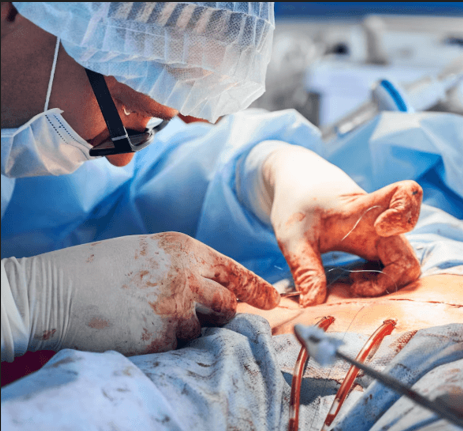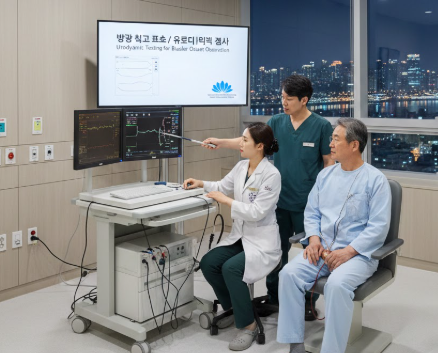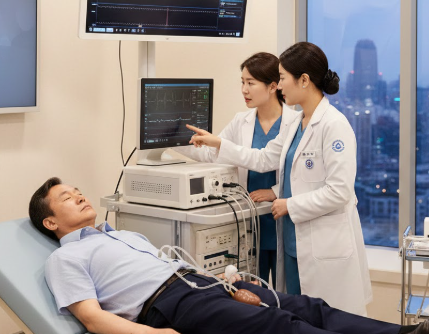Treatment Overview
The Single-Incision Laparoscopic Uterus Removal (SILUR) in Korea is an advanced minimally invasive hysterectomy procedure that uses a single incision—usually hidden within the navel—to remove the uterus. This technique combines laparoscopic precision with the aesthetic benefit of reduced visible scarring, faster recovery, and minimal postoperative pain.
Korea is a global leader in single-incision laparoscopic surgery, thanks to its adoption of high-definition imaging systems, advanced laparoscopic instruments, and specialized surgical training. This makes Korea a top destination for women seeking cutting-edge uterus removal surgery with the least invasive approach possible.
Purpose & Benefits
Purpose:
- Remove the uterus with the least possible surgical trauma
- Offer a cosmetically superior solution for hysterectomy
- Provide a safer, faster recovery alternative to traditional open surgery
Benefits:
- Only one incision, usually hidden, resulting in minimal scarring
- Less postoperative pain compared to multi-port surgery
- Faster recovery and shorter hospital stay (typically 1–2 days)
- Reduced risk of infection and adhesions
- Improved cosmetic outcomes and patient satisfaction
- Short downtime and quicker return to normal life
Ideal Candidates
SILUR is suitable for women who:
- Require hysterectomy for benign or malignant uterine conditions
- Prefer a single-incision, minimally invasive approach
- Wish to minimize scars and recovery time
- Are in good general health and suitable for laparoscopic surgery
Korean hospitals perform thorough preoperative assessments, including imaging and laboratory testing, to ensure suitability and customize surgical plans for each patient.
Possible Risks & Complications
While SILUR is generally safe, possible risks include:
- Minor bleeding or infection
- Injury to surrounding pelvic organs (rare)
- Temporary urinary or bowel discomfort
- Adhesion formation (rare)
- Anesthesia-related complications
Korea’s advanced imaging, precision instruments, and surgeon expertise significantly reduce these risks.
Surgical Techniques Used
Korean centers employ cutting-edge techniques for SILUR:
- Single-Incision Laparoscopy: A single, hidden incision, typically within the navel.
- High-Definition Laparoscopic Imaging: Enhances surgical precision.
- Flexible and Specialized Laparoscopic Instruments: Designed for optimal maneuverability through a single port.
- Energy-Based Vessel Sealing Devices (Ultrasonic/Bipolar): Ensure minimal bleeding and precise dissection.
- Fluorescence Imaging (ICG): Assists in identifying vital structures and preserving function.
This combination ensures SILUR offers the advantages of minimally invasive surgery with superior cosmetic and recovery benefits.
Recovery & Aftercare
Recovery after SILUR is generally faster than traditional hysterectomy procedures. Most patients can resume light activity within a few days and return home within 24–48 hours.
Postoperative care includes:
- Pain management and incision care
- Avoiding strenuous activities for 4–6 weeks
- Follow-up visits to monitor healing
- Pelvic floor physiotherapy if indicated
- Nutritional and hormonal guidance for optimal recovery
Korean hospitals provide personalized aftercare programs, including rehabilitation support and holistic recovery guidance.
Results & Longevity
SILUR provides excellent long-term outcomes:
- Complete uterus removal with minimal tissue trauma
- Faster recovery and less postoperative pain
- Minimal scarring with a high aesthetic benefit
- Reduced risk of complications and adhesions
- Long-term improvement in pelvic health and quality of life
Korea’s expertise in single-incision laparoscopic surgery ensures consistently high patient satisfaction.
Treatment Process in Korea
The SILUR process in Korea is structured and patient-focused:
- Comprehensive Consultation & Evaluation: Includes imaging (ultrasound, MRI), lab tests, and health assessment.
- Individualized Surgical Planning: Based on uterine size, condition, and patient preferences.
- Single-Incision Laparoscopic Surgery: Performed with high-definition imaging and precision instruments.
- Structured Postoperative Care: Including physiotherapy, wellness guidance, and follow-up.
Korean hospitals offer full international patient support, including travel arrangements, interpretation, and accommodation assistance.
Cost Range
The Single-Incision Laparoscopic Uterus Removal in Korea generally ranges between USD 9,000 and 16,000, depending on:
- Complexity of the case
- Hospital and surgeon expertise
- Equipment and technology used
- Length of hospital stay and aftercare program
Costs typically include consultation, surgery, anesthesia, hospitalization, and follow-up care.
Popular Clinics
- Samsung Medical Center (Seoul): Known for advanced single-incision laparoscopic gynecologic surgery.
- Asan Medical Center (Seoul): Offers high-definition single-port laparoscopic uterus removal with minimal recovery time.
- Severance Hospital (Yonsei University, Seoul): A leader in single-incision and robotic-assisted laparoscopic procedures.
- CHA Gangnam Medical Center: Specializes in single-port minimally invasive hysterectomy with aesthetic focus.
- Ewha Womans University Medical Center: Offers single-incision laparoscopic uterus removal with holistic recovery programs.




